There are many good reasons to incorporate yoga into your exercise routine. Yoga improves muscle tone, flexibility, and balance and helps you relax and relieve stress, thanks partly to its distinctive pranayama breathing. Research also shows that practicing yoga also reduces stress, anxiety, depression, and chronic pain; helps you sleep better; and improves general well-being and quality of life.
1. Easy Pose — Sukhasana — to Relieve Stress
Sit cross-legged on a yoga mat, hands on your knees, palms facing up. Keep your spine as straight as possible. Push your sit bones toward the floor — your “sitting bones” in yogic terms. Close your eyes and inhale.
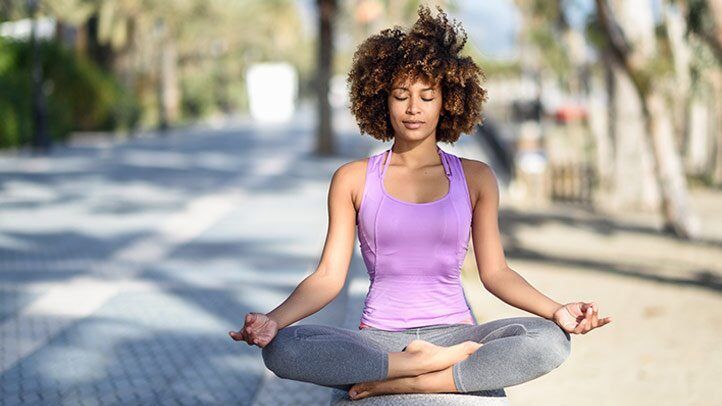
“This is a great beginner’s pose for an evaluation,” says Gwen Lawrence, yoga instructor for the New York Knicks and other sports teams, athletes, and celebrities. “Simply sitting on the floor gives you the perfect way to see and feel the external rotation of the foot.” This pose also improves back flexibility and can help relieve stress.
2. Cat-Cow to Awaken the Spine and Ease Back Pain
Stand on the mat on all fours, with your hands under your shoulders and your knees under your hips. Distribute your body weight evenly between both hands and spread your fingers wide. Inhale and round your back, arching it as you lower your chin to your chest; Feel the stretch from your neck to your tailbone, like a cat. On an exhale, lower your back ultimately into a spoon shape while lifting your head and tilting it back.
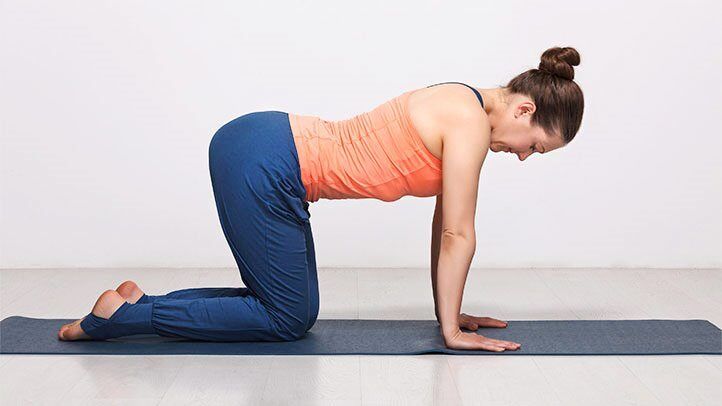
“Cowcats stretch and awaken the spine, which reduces back pain,” says Baptist yoga teacher Leah Cullis. “It also opens up and increases flexibility throughout the spine, neck, chest, and shoulders. I suggest repeating it 5 to 10 times or more.
3. Tree Pose — Vrksasana — to Improve Your Balance
Begin by standing straight for this pose. Bring your hands together in a prayer position and raise them above your head. Balance on the right foot. Bend your left knee to the left and press your left foot into the inside of your right leg. Hold for 30 seconds. Switch legs and repeat.

“This pose helps stretch your body from heel to toe,” says Shea Vaughan, health and wellness expert and author of Breakthrough: The 5 Life Principles to Beat Stress, Look Great, and Find total health’ To be (and mother of actor Vince Vaughn). This will also help you improve your balance.
4. Downward-Facing Dog — Adho Mukha Svanasana — to Enhance Flexibility
In Downward Facing Dog, your body forms an inverted V shape. Begin by placing both hands, palms down, on the mat in front of you; Your hands should be slightly in front of your shoulders. Place your knees on the floor directly under your hips. Exhale as you lift your knees off the floor and lift your buttocks and hips toward the ceiling. Push your thighs back and drive your heels toward the floor. Keep your head between and parallel to your upper arms without hanging down. If your lower back is arched, bend your knees to lengthen your back.
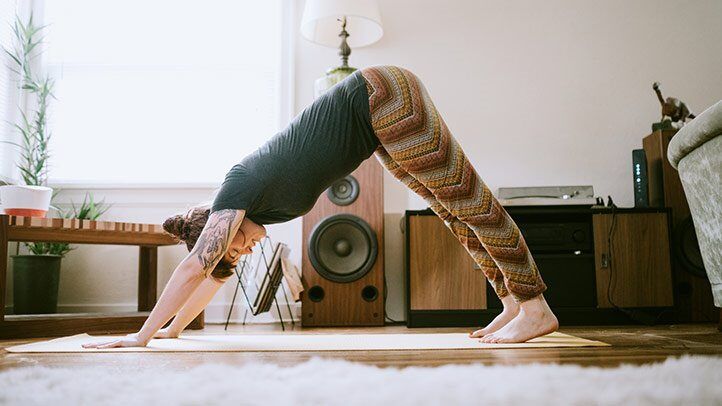
“Downward facing dog calms the nervous system, works on overall flexibility, decompresses the spine, tones the arms, sculpts the legs, and opens the shoulders,” says Cullis. This pose is often held for five breaths between sides or longer for more strength-building benefits. Stretch from your wrists to your hips as you inhale, and deepen your roots from your hips to your heels with each exhale, suggests Cullis.
5. Child’s Pose — Balasana — to Help You Relax and Unwind
In Downward Facing Dog, simply bend your knees and lower your buttocks toward your heels while bringing your chest to the floor above your knees. Drop your shoulders and head to the floor. Place your hands by your sides, palms down, or you can support your head by crossing your arms under your forehead. Breathe and relax as long as necessary.
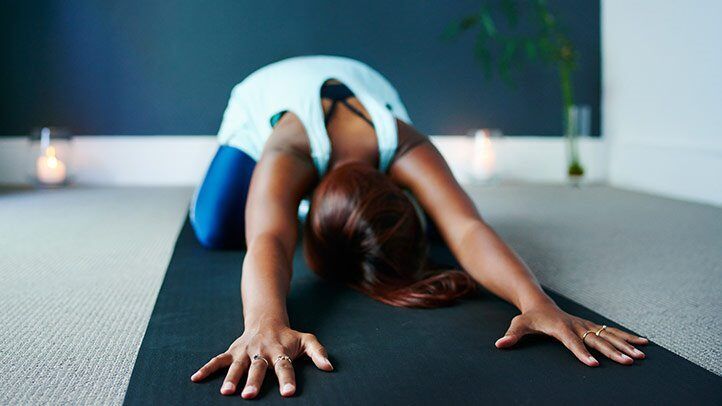
“Children’s pose is one of the most healing and my favorite yoga poses,” says Cullis. “It awakens the connection between the breath and the body and sends relaxing energy throughout the muscles. It’s an opportunity to ground yourself, go within, and step outside your busy mind and into your body, awakening your breath from the inside out.” Child’s Pose is a great way to practice it during a yoga practice or whenever you feel like taking a break. and relaxing, tired, or overwhelmed.
6. Baby Pigeon Pose to Open Up Your Hips
From an all-fours position, bring your right knee forward between your hands. As if jumping, slowly extend your left leg back, keeping your knee and toes on the floor. Now rotate your right knee toward your right wrist and lower down with your right calf on the floor and your right foot under your left groin. Lower your body onto the bent leg to the floor or rest on your elbows. Inhale and exhale slowly five times. Before switching sides, push your left leg back to stretch your calf muscles. Repeat with the left leg bent and the right leg straight.
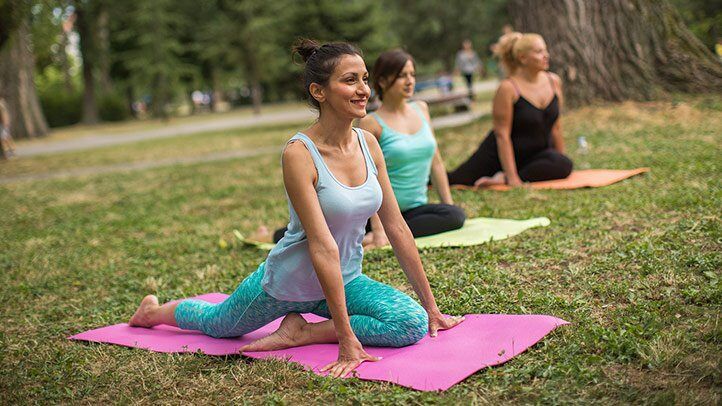
Lawrence says this pose is popular with runners because it increases hip flexibility and reduces stress on the glutes and lower back. “Whether you’re running, lifting weights, doing CrossFit, or spinning, you need to do these stretches to stay strong, flexible, and improve your performance.” It may be challenging at first, but you’ll learn to love this pose, promises Lawrence.

